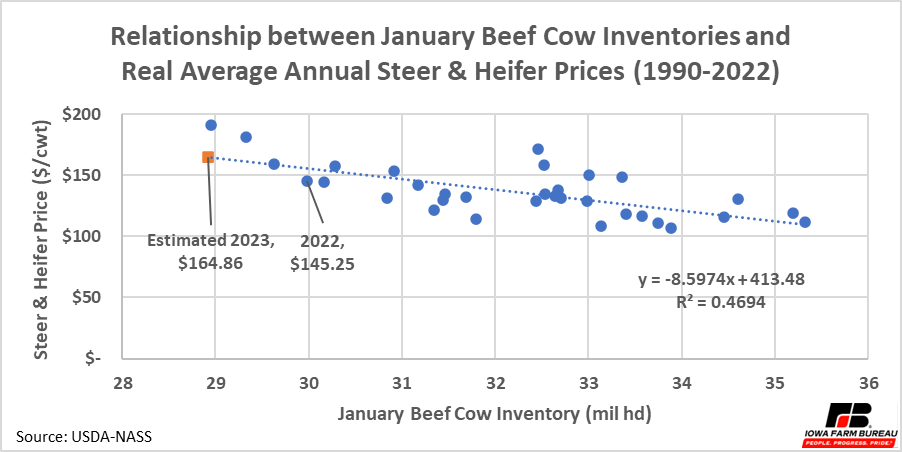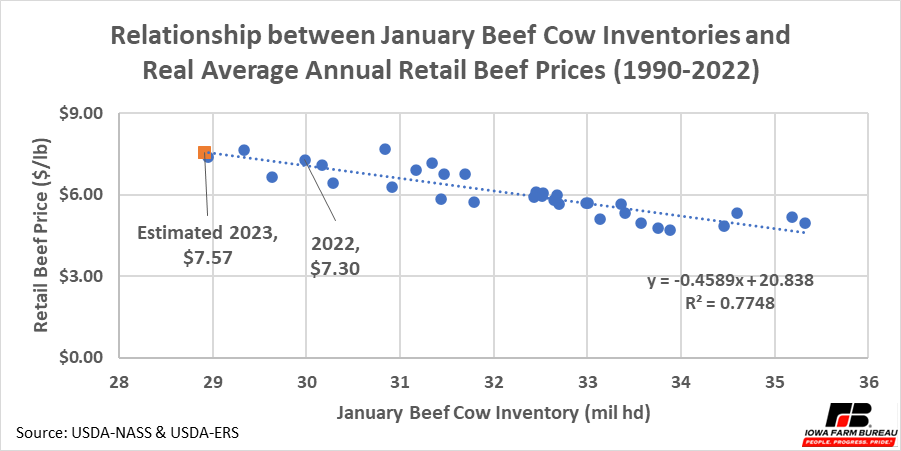Where Beef Prices Could Go at Current Inventory Levels
Author
Published
2/6/2023
Where Beef Prices Could Go at Current Inventory Levels
Cattle inventories across the board are at low levels. Total cattle inventories including all beef and dairy animals are at their lowest point since 2014. Beef cow inventories are technically the lowest since the 1960’s, though the US came close to current levels in 2014 as well.
Lower supplies of cattle put upward pressure on cattle and beef prices. Other factors also influence prices, but all else being equal less cattle mean higher prices. This simple comparison is shown in Figure 1and Figure 2. The orange dots in each graph represent the point on the trendline at the 2023 January 1st beef inventory mark. The January 1st beef cow inventory suggests a price of $165 per 100 pounds for live steers and heifers and a retail beef price of $7.46 per pound. Both are up from average annual price last year. Furthermore, both prices are in terms of 2022-dollars in the graphs below. If inflation continues, each price may be even higher in 2023.

Figure 1. Relationship between January Beef Cow Inventories and Real Average Annual Steer and Heifer Prices (1990-2022)

Figure 2. Relationship between January Beef Cow Inventories and Real Average Annual Retail Beef Prices (1990-2022)
Notice the change in retail beef prices is expected to be much smaller than the change in cattle prices in the graphs above. The trendlines predict retail beef prices to increase about 2%, but cattle prices to increase about 14%.
This is not surprising. Most of the costs associated with retail food prices are associated with processing, transportation, marketing, and the retail margin. The price of the major commodity used to make products, typically represents a small percentage of the total cost of the retail food. Therefore, changes in commodity prices and commodity market conditions have a smaller and smaller effect on product prices the further down the supply chain the product gets.
Using only cattle inventories to forecast beef prices is not a reliable forecasting method. Many other factors like disposable income, the price of other meats, and the cost of producing cattle influence final retail prices. However, this relationship does show lower inventories typically lead to higher prices for live cattle. Furthermore, it also suggests that the change in cattle prices will likely be larger than the change in retail beef prices.
Economic analysis provided by Aaron Gerdts, Research Analyst, Decision Innovation Solutions on behalf of Iowa Farm Bureau.
Want more news on this topic? Farm Bureau members may subscribe for a free email news service, featuring the farm and rural topics that interest them most!